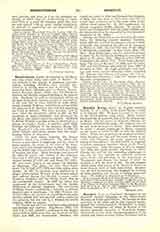

Benedictbeurn, Abbey of, situated in the Bavarian Alps, about thirty miles south of Munich. It was formerly in the Diocese of Augsburg, but some writers, including Mabillon, have wrongly described it as having been in that of Freising. The name has been variously spelt as Beuren, Beuern, Buron, Beweren, Baiern, Beyrn, etc., but that given above is the officially accepted spelling at the present time. Tradition, as well as manuscripts dating as far back as the tenth century, ascribe its foundation, in the year 740, to three brothers of noble birth, named Lanfrid, Wulfram, and Eliland, acting under the influence of St. Boniface, who was then preaching the Faith in Bavaria. The three founders, each in turn, ruled the monastery, which in 955 (or 973 according to some authorities) was destroyed by the Huns, who then ravaged the country. Restored in 969 by Wolfold, a secular priest, it continued as a college of regular clergy, or canons, until 1031. ‘Through the influence of the Emperor Henry III, the Benedictine rule was revived there in 1031 by .Abbot Ellinger and eleven monks from the neighboring Abbey of Tegernsee.
Under the next abbot, Gothelm, the famous monastic school was established. The abbey also became a great place of pilgrimage and the scene of many miracles, by reason of the relics of St. Anastasia which were brought thither in 1053. Throughout the Middle Ages it continued to flourish as a home of learning and piety. Many privileges were granted by different popes, and several of the emperors honored it with their favor and their visits. The Abbots Ortolph II (1271-84) and Henry III (1284-:89) were made Princes of the Empire by Rudolph of Hapsburg. The abbey was four times burnt down, viz: in 1248, 1377, 1378, and 1490, and as often rebuilt. In 1611 its numbers were depleted by a plague which carried off many of the monks, and it also suffered during the Swedish invasion under Gustavus Adolphus and the Thirty Years’ War in the seventeenth century. In 1803 the abbey was suppressed by the Government and the monks, thirty-four in number, dispersed. The conventual buildings became successively a barracks, a military hospital, and a stud-house. In 1901 Freiherr von Kramer-Klett, the restorer of several Bavarian monasteries, offered five and one-half million marks for the property, but was met by a demand for twelve millions, which he refused.
The library and archives contained many priceless manuscripts and charters. Ziegelbauer Hist. Lit.-Ord. S.B., I, 543) printed a catalogue of the library, dated 1250, in which more than one hundred and fifty books and MSS. are enumerated. Mabillon, who visited the abbey in 1683, and Bernard Pez, librarian of Melk, who was there in 1717, have both left on record their testimony as to the great value of the codices there preserved. At the suppression the library comprised 40,000 volumes. A number of these were incorporated with the Court Library and the remainder left to be disposed of by the subsequent occupants of the abbey.
Amongst the illustrious men produced by Benedictbeurn the following deserve mention: Gothelm, abbot 1032-62; founded the monastic school in 1033. Gotschalk, who translated the relics of St. Anastasia to Beurn in 1053; the first historian of the abbey (“Breviarium Gotschalki” in Mon. Germ. Hist., IX, 221). Dom Simon Speer, martyr; tortured and put to death by the Swedes for refusing to surrender the goods of the abbey, 1632. Magnus, abbot 1707-40; resuscitated the school, 1711. Dom Carolus Meichelbeck, “the Livy of Bavaria”, b. 1669; took the habit, 1687 and was librarian and archivist from 169e, till his death in 1734. He taught philosophy and theology and wrote various historical works, including the “History of the Diocese of Freising”, the “Chrone icon Benedicto-Buranum”, and the “Annals of the Bavarian Congregation”.
G. CYPRIAN ALSTON

